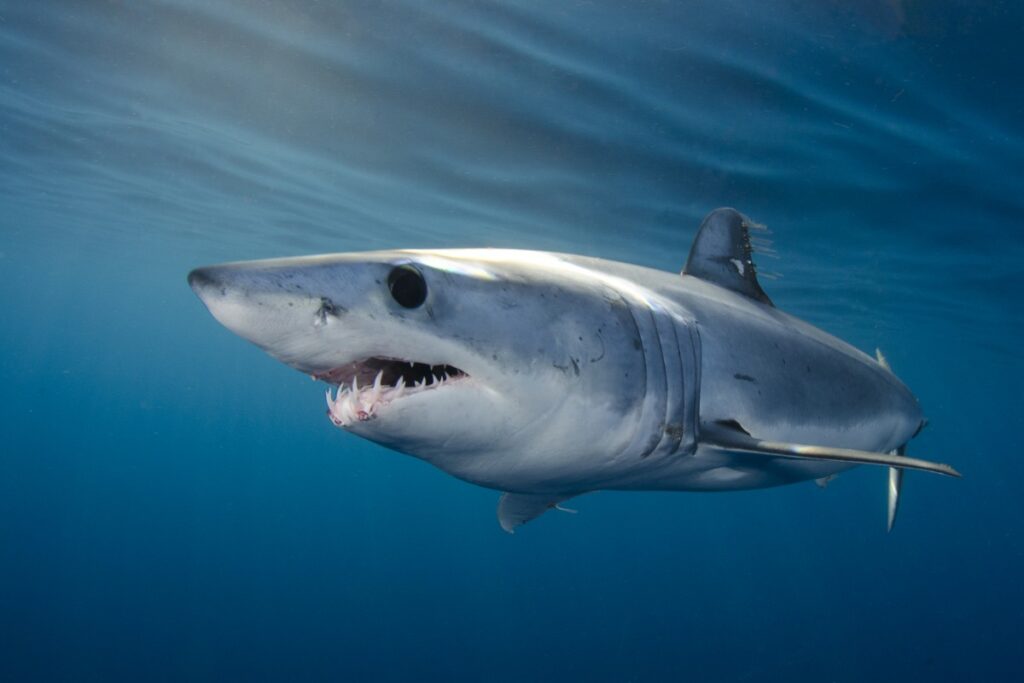Do Sharks Have Bones?
-by Abhrajita Mondal
–Reading Time – 7 min Approx
–Edited by – Srishti Bhattacharyya
The answer to your question ‘do sharks have bones’ is no. Sharks do not have bones. Neither do related species. What do sharks have instead of bones? They have cartilage. It is quite evident from the fact that scientists find tonnes of shark teeth, but few fossils. Unlike human beings and other animals, sharks do not have skeletons made of bones. The cartilage does not mineralize as much. So they are not preserved well. The class ‘Chondrichthyes’ are specifically called cartilaginous fishes.
There is an easy example to explain the difference between bones and cartilages. All humans have cartilage in their ears and noses. That is why these body parts are flexible. However, it isn’t the same with the limbs. Sharks have two types of cartilages. The cartilage is dense in some areas and light in some. It has been observed that the spine of the shark has dense vertebrae. That is the reason why it gets fossilized at times.
Chondrocranium is the name associated with shark skulls. Humans have it in the early stages of life. Slowly, it gets replaced with bones. Now, sharks have teeth. So the next question you might have is – are shark teeth bones? No, they are not. They are made from dentin. The dentin tissues can get calcified. Thus, you will find pictures of shark teeth in fossilized conditions. So, it is true that sharks do not have bones.
Guide To Do Sharks Have Bones:
You already know by now that sharks have cartilage instead of bones. But how did cartilage come around? Moreover, how did they evolve? The DNA sequence of the Elephant Sharks can give you the answer. Elephant Sharks are a part of the early evolutionary sequence. They started as cartilaginous fishes called Chimaeras. They are also related to Rays. Elephant Sharks have a pointed spike on their dorsal fin. It helps them to ward off predators. The elephant shark is a jawed vertebrate and it hasn’t changed much in the preceding years. Bony fishes came much later. They are helpful for the study of comparative genomics.
Scientists have singled out sharks and rays for their research. It was not clear if sharks lost their bone-forming capability or never had it. After all, they do have small bony structures as fin spines. Further studies have revealed that they do not have one gene that converts cartilage into bones.
How Many Bones Do Sharks Have?
Many of you were wondering, how are sharks so powerful? Humans derive their strength from bones and muscles. So, sharks might be having more of them. However, you have been proved wrong. As you know, sharks do not have any bones at all. Cartilage makes the shark’s body more flexible. Thus, sharks can move with relative ease and less expenditure of energy. Cartilage is the base of bones. They have no blood supply. You can see this in babies. After birth, babies have rubbery legs. The reason being, they do not have a blood supply. RBCs are connected with bones. However, sharks do not have any. So, where do they get their blood supply from?
The sharks produce RBCs in their spleen, epigonal organ, and in their Leydig’s organ. It is only present in Chondrichthyes or cartilaginous fishes. They do not rely on bones. Moreover, having cartilages make sharks esteemed creatures. They are on top of the food chain. Even though sharks don’t have bones, they do have skeletons. Additionally, shark skeletons do not have any muscle attached to them. Sharks are called vertebrates. Shocked? Well, no one said, that the vertebra has to have bones. Shark vertebrae are calcified. That explains your question ‘How many bones do sharks have’.
Facts about Sharks Apart from Shark Bones:
You have detailed information on shark bones. However, that is not all. There are more facts associated with sharks. They have been around for more than 455 million years. Sharks have vertebrae that contain rings and bands. Scientists can tell the age by counting the rings or bands. If there are fifteen, it means the shark is fifteen years old. Moreover, different sharks have different types of teeth.
Mako Sharks have very sharp teeth. White ones have serrated teeth. A Sandbar Shark has 35,000 teeth in a lifetime. Sharks also reproduce in different ways. Now, that makes sharks an amazing fish. You ought to know more about it. Sharks are amazing fish. Moreover, sharks have good eyesight. They can see in dimly lit water. They can also see colors. Another amazing fact that you should know is about their trance-like state. Sharks will go into a trance if you flip them upside down. You must have heard of the blue shark? It is of brilliant blue color. Other sharks are mostly olive, grey, or brown.
The next question that arises is do sharks have scales? Sharkskin feels like sandpaper. It has tiny teeth-like scales. They are called placoid scales. You will hear another name associated with it and that is dermal denticles. These denticles are V-shaped. The scales point towards the tail. It is beneficial for sharks as it allows them to avoid friction with the surrounding water.
Wait! There is a second advantage too. The thicker denticles protect sharks from external scratches. The skin feels smooth if you move your hand from the top of the body to the tail. However, if you run your hands in the opposite direction, it will feel rough. The shark grows more scales as it increases in size.
Do Whales Have Bones?
There is another mammal in the deep seas, the Whales. Many people often confuse the shark with the whale. However, the main difference between both is that shark is a fish whereas a whale is not. Moreover, names like ‘Whale shark’ can confuse you all the more. Whales are vertebrates too. But they fall under a different class. They too are quite old on the planet. Their history goes back around 180-20 million years.
The main difference is the topic of discussion today. Yes, we are talking about bones. Whales have bones. Sharks have gills to pull in oxygenated water for breathing. However, whales breathe through lungs. That is why whales frequently swim to the surface of the water to breathe. The air enters through a blowhole, which is located at the top of the head. Furthermore, sharks are cold-blooded while whales are hot-blooded. The final and most important differentiating factor is that whales have mammary glands.
Whales are cetaceans. They are animals that have streamlined bodies. There are around eighty-eight species of whales. Their bones are light in weight. They have a skull, backbone, rib cage, and pelvis made from bones. Many mariners have come across large whale skeletons. They are displayed in museums as well. The Baleen whales have huge skulls with jawbones, but there is no bone in the tail. Although whales have real bones, they are spongy. The bones help them to float in water.
The largest of whales is just weightless in the expansive ocean. You will find bones in the flipper as well. Over ten million years, whales have evolved a lot. Their forelegs became flipper and hind legs vanished. Their nostrils are the blowhole of today’s whales.
Do Fish Have Bones?
Some fish has bones and some do not. You must have heard of the Hagfish. It is also quite popular as the Slime eel. It is the only fish that does not have bones. Instead of bones, it has a notochord. It is a flexible rod made up of cartilage. So, there are three categories – the ones with bones, one with a notochord, and the third one that you know about is the cartilaginous fishes or sharks.

Fish with bones fall in the category of Osteichthyes. They are found both in salty water and freshwater. However, the cartilaginous ones stay in salty water. So, why do fish require bone? The answer is, to support the fleshy parts of their body. A part of the fish’s skeleton grows with its skin. These transform into fins and scales. Both of protect the fish. Do you know that some fish rattle their bones to send signals to other fish?
There are various creatures in the deep blue seas and oceans. Each one is made differently. The features are in line with the tasks the creatures have to perform. Evolution has also led to various structural changes. Livelihood and protection are the key factors that are either a result of the feature or the other way. Today, you have a completely new insight into deep-sea marine creatures. Do share your thoughts about it!
-by Abhrajita Mondal
Dear Reader, Hope you liked the post. If you think our initiative “The Creative Post” is worth supporting, then please support us by paying the amount you think we are worthy of. We believe, the value of content should be decided by the consumer. Hence we request you to evaluate our worth and pay accordingly by Clicking Here.


